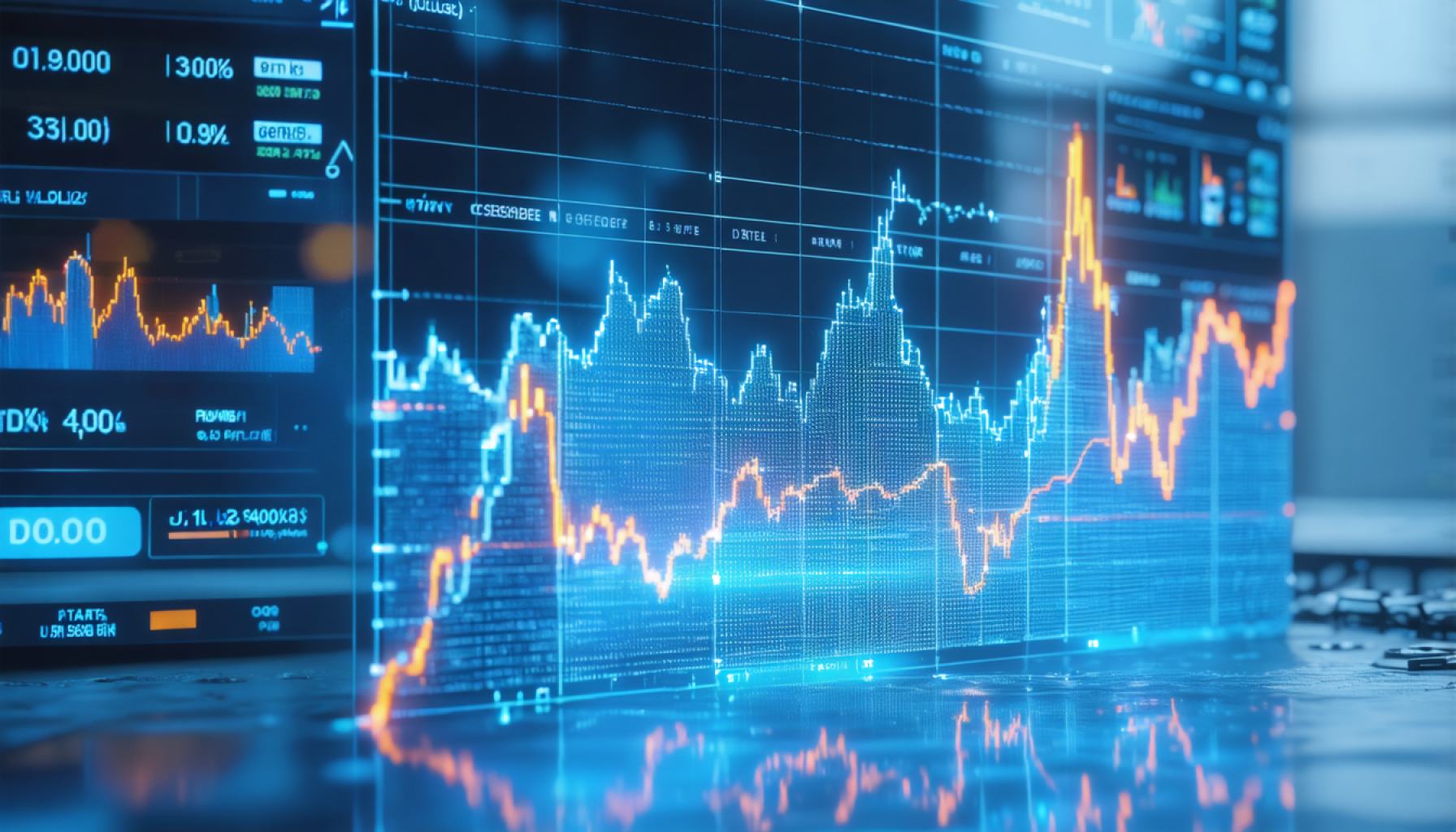- Dow Inc.’s stock price soared by 7.3%, hinting at positive outcomes for major institutional investors.
- Institutions hold a significant 67% stake in Dow, potentially influencing its direction through collective decisions.
- The Vanguard Group, Inc. and other investors have the potential to shift markets significantly with coordinated actions.
- Decentralized ownership means no single shareholder dominates, creating a dynamic and unpredictable balance.
- Insiders, with less than 1% ownership, express cautious optimism through their investment activities.
- Public investors own 32% and can be influential, often aligning with larger institutional trends.
- Understanding Dow’s complex ownership structure is key for predicting impacts on stock value and corporate decisions.
A sharp surge in Dow Inc.’s stock price, climbing a notable 7.3% last week, might signal good news for its major institutional investors. Yet, beneath this financial ballet lies a complex dance of dominance that could sway the company’s direction. Institutions, holding a hefty 67% stake, essentially hold the reins in the corporate arena. These investors, ranging from giants like The Vanguard Group, Inc. to other strategic players, carry not just stakes, but potential market-shifting muscle. If they collectively decide to change course, Dow Inc. could find itself on a financial roller coaster.
While the institutional grip suggests a vote of confidence, it’s not always a stabilizing anchor. Institutional investors sometimes chase benchmarks and indices, making their investments vulnerable to broader market sentiments. A collective institutional pivot, though rare, can jolt stock stability with sudden sell-offs, reflecting their shifting strategies or external market pressures.
Interestingly, Dow isn’t tightly held by any single shareholder. The diverse ownership, spreading across 25 major shareholders controlling under 50% collectively, introduces a democratic—if volatile—balance. This decentralization offers opportunities yet remains fraught with risks, as no single entity sways authority, leaving the company perpetually at the mercy of collective investor mood swings.
Adding a personal touch, insiders, including executives and board members, seem to be cautiously optimistic, albeit with a less than 1% ownership. Insider transactions, like purchases and sales, sometimes whisper insights into future confidence or caution.
Public investors also hold a decisive, though not dominating, 32% stake. Their collective voice, while impactful, often aligns with or yields to larger institutional sentiments when major decisions loom.
Behind this ownership tapestry lies a vital narrative: vigilance. For potential investors and stakeholders, understanding this mosaic of power dynamics isn’t merely academic. It’s an essential strategy for anticipating how shifts might echo in stock valuation and corporate policy. As we look toward Dow’s potential growth, one cannot help but ponder: when these institutional titans move, will they lift or lower Dow Inc.’s fortunes?
Such is the balance of power—fragile, formidable, and forever fascinating.
Why Institutional Investors Hold the Key to Dow Inc.’s Future
Understanding Institutional Influence on Dow Inc.’s Stock
The recent 7.3% rise in Dow Inc.’s stock price highlights the immense sway institutional investors have over the company’s direction. Holding 67% of Dow Inc.’s shares, these investors possess substantial power to influence corporate decisions and market behavior. Major players, like The Vanguard Group, Inc., play pivotal roles, but their actions also introduce potential volatility depending on market trends and external pressures.
Key Insights and Predictions
1. Institutional Impact: Institutional investors often chase benchmarks, which implies their strategies could be more aligned with broader market sentiments than company-specific stability. This might lead to sudden shifts in stock prices if they decide to pivot their investment strategies (Source: Financial Industry Regulatory Authority).
2. Diverse Shareholding: Dow Inc. is not dominated by a single shareholder, as the largest shareholders control less than 50% collectively. This distributed ownership suggests more democratic decision-making but can lead to abrupt changes if shareholder sentiments swiftly shift.
3. Insider Confidence: Executives and board members hold less than 1% of the shares, but insider trades can be indicative of future stock performance. Monitoring these trades could provide insights into the company’s future directions.
How-To Steps & Life Hacks for Potential Investors
– Analyze Ownership Structure: Understanding who holds the reins at Dow Inc. provides a clearer picture of possible future stock trends. Investors should regularly review institutional holdings and major shareholder movements.
– Monitor Market Trends: Since institutional investors can impact stock stability based on market benchmarks, staying informed about macroeconomic trends can offer predictive insights.
– Watch Insider Transactions: Checking recent insider trading activities gives clues about internal confidence levels and can be a predictive tool for stock performance.
Pros & Cons Overview
Pros:
– Potential Growth: Institutional confidence suggests potential growth driven by their strategic investments.
– Democratic Ownership: Diverse shareholder base can prevent unilateral decision-making.
Cons:
– Volatility Risks: A small change in institutional sentiment could result in significant stock price fluctuations.
– Minor Insider Ownership: With minimal insider stakes, internal stakeholders might have less personal financial investment in the company’s success.
Insights & Predictions
Analysts suggest that while Dow Inc.’s decentralized shareholder structure may offer stability through diversity, it could also invite inconsistency if investor mood swings towards skepticism. Understanding the interplay between institutional strategies and market conditions will be crucial in predicting future trends for Dow Inc.
Actionable Recommendations
– Stay Informed: Regularly update yourself with reports on institutional holdings and recent market analysis.
– Diversify Your Portfolio: Consider other assets to hedge against possible volatility in Dow Inc.’s stock.
– Focus on Long-Term Viability: Evaluate the company’s fundamentals, such as financial health and industry position, alongside market trends.
By understanding the intricate dynamics of ownership and institutional influence, investors can make more informed decisions regarding their involvement with Dow Inc.
For further reading and market insights, consider visiting Dow Inc. for official updates and reports.
